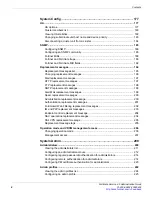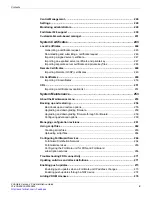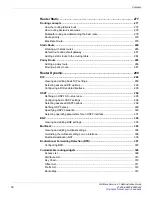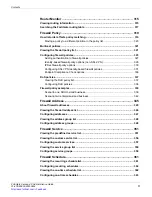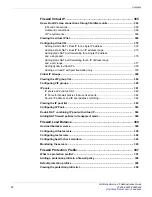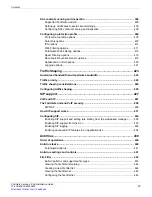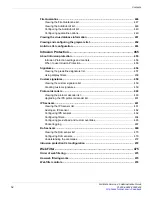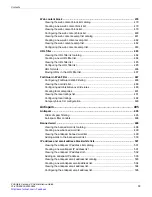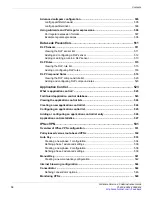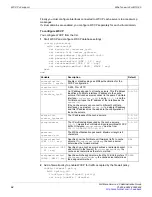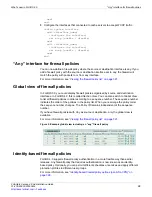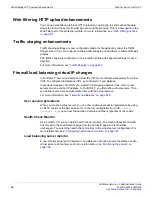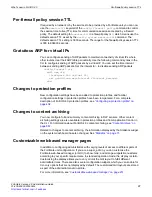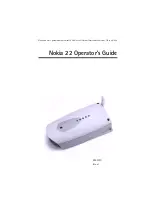
About this document
Introduction
FortiGate Version 4.0 Administration Guide
22
01-400-89802-20090424
This section of the guide contains a brief explanation of the structure of the guide, and
gives an overview of each chapter.
The administration guide describes web-based manager functions in the same order as
the web-based manager (or GUI) menu. The document begins with several chapters that
provide an overview to help you start using the product: the FortiGate web-based
manager, System Status, Managing Firmware, and Using virtual domains. Following
these chapters, each item in the System, Router, Firewall, UTM, and VPN menus gets a
separate chapter. Then User, WAN optimization, Endpoint Control, and Log&Report are
all described in single chapters. The document concludes with a detailed index.
VDOM and Global icons appear in this administration guide to indicate that a chapter or
section is part of either the VDOM or Global configuration. VDOM and Global
configuration settings apply only to a FortiGate unit operating with virtual domains
enabled. No distinction is made between these configuration settings when virtual
domains are not enabled.
The most recent version of this document is available from the
page of the
Fortinet Technical Documentation
web site. The information in this document is also
available in a slightly different form as FortiGate web-based manager online help.
You can also find more information about FortiOS from the same FortiGate page, as well
as from the
This administration guide contains the following chapters:
•
lists and describes some of the new features and changes
in FortiOS Version 4.0.
•
introduces the features of the FortiGate web-based manager,
and explains how to connect to it. It also includes information about how to use the
web-based manager online help.
•
describes the System Status page, the dashboard of your FortiGate
unit. At a glance you can view the current system status of the FortiGate unit including
serial number, uptime, FortiGuard license information, system resource usage, alert
messages and network statistics. You can also access the CLI from this page. This
section also describes status changes that you can make, including changing the unit
firmware, host name, and system time. Finally this section describes the topology
viewer that is available on all FortiGate models except those with model numbers 50
and 60.
•
describes upgrading and managing firmware versions.
You should review this section before upgrading your FortiGate firmware because it
contains important information about how to properly back up your current
configuration settings and what to do if the upgrade is unsuccessful.
•
describes how to use virtual domains to operate your FortiGate
unit as multiple virtual FortiGate units, which effectively provides multiple separate
firewall and routing services to multiple networks.
•
explains how to configure physical and virtual interfaces and DNS
settings on the FortiGate unit.
•
describes how to configure the Wireless LAN interface on a
FortiWiFi-60 unit.
•
explains how to configure a FortiGate interface as a DHCP server or
DHCP relay agent.
•
contains procedures for configuring HA and virtual clustering,
configuring SNMP and replacement messages, and changing the operation mode.
Summary of Contents for Gate 60D
Page 705: ...www fortinet com...
Page 706: ...www fortinet com...

